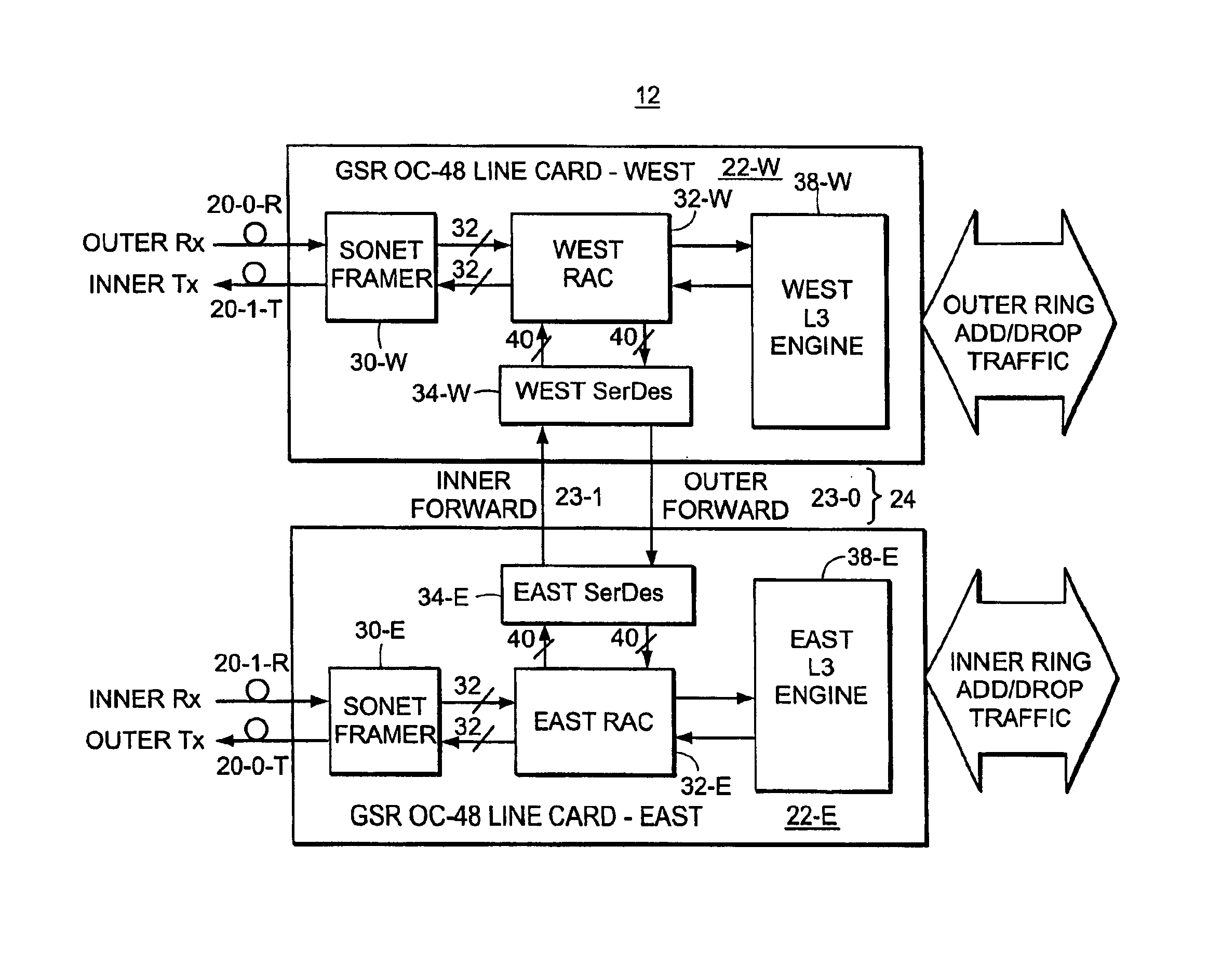Configurable serial interconnection
a serial interconnection and configuration technology, applied in data switching networks, time-division multiplexing selection, instruments, etc., can solve the problems of increasing the configuration difficulty of such systems, affecting the performance of all devices, and the bus oriented time slot architecture does not scale well in many applications, so as to achieve efficient passing of packet oriented data and increase the payload capacity
- Summary
- Abstract
- Description
- Claims
- Application Information
AI Technical Summary
Benefits of technology
Problems solved by technology
Method used
Image
Examples
Embodiment Construction
1.0 System Architecture
Turning attention now to FIG. 1, there is shown one example of a system 10 in which a high-speed interconnect structure and protocol may be used to particular advantage. It should be understood that the illustrated system is exemplary only and that other electronic systems may also make use of a configurable serial interconnection according to the present invention.
The illustrated system 10 is an internetworking device for routing packetized data among various locations. In this system 10, there are a number of nodes 12-1, 12-2, . . . 12-N arranged in a ring type topology. Each specific node may, for example, include switches and / or router devices to connect to the ring in order to send data to the other devices connected to the ring. The specific ring illustrated uses a so-called Dynamic Packet Transport (DPT) technology which uses a pair of counter rotating fiber optic cables or 16 and 18 as the physical path to support transmission of data and control packe...
PUM
 Login to View More
Login to View More Abstract
Description
Claims
Application Information
 Login to View More
Login to View More - R&D
- Intellectual Property
- Life Sciences
- Materials
- Tech Scout
- Unparalleled Data Quality
- Higher Quality Content
- 60% Fewer Hallucinations
Browse by: Latest US Patents, China's latest patents, Technical Efficacy Thesaurus, Application Domain, Technology Topic, Popular Technical Reports.
© 2025 PatSnap. All rights reserved.Legal|Privacy policy|Modern Slavery Act Transparency Statement|Sitemap|About US| Contact US: help@patsnap.com



